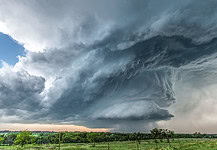Last Updated on November 5, 2023, 9:40 AM | Published: November 1, 2023
OKLAHOMA CITY — In Oklahoma, as in the rest of the country, clocks will move back by one hour at 2 a.m. on Sunday, November 5th, bringing to a close yet another year of Daylight Saving Time.
On and off for more than a century, the United States has observed the system of moving clocks ahead by one hour in the springtime and back again in the fall in order to ensure more hours of afternoon and evening daylight in the late spring and summer months.
But that means losing sleep in the spring and enduring long, dark, sometimes depressing nights in the fall and winter, just some of the conditions that have resulted in widespread divisiveness regarding the practice and repeated attempts to nix it altogether.
So why do we keep doing it? Can it be stopped? Should it be stopped? What can be done?
Well, the answers to those questions are more complicated than remembering how to change all the digital clocks in your house once again.
Up Before the Sun
The US actually locked in Daylight Saving Time (that’s right, it’s actually “Saving Time,” not “Savings Time”) completely once before.
Back in 1973, bringing an official end to the practice of clock-changing nationwide was a hot-button issue, with up to 70% of the voting public in favor of setting the clocks ahead in the spring and just leaving them there. No more “falling back” come 1974.
By October of the following year, the entire country seemed to be clamoring for Daylight Saving to be reinstituted, as an entire year’s worth of pre-dawn mornings in the dark had drastically lowered worker morale and (some claimed) endangered the lives of schoolchildren.
Congress quickly put Daylight Saving Time’s endpoint back into effect, and the US has continued the practice ever since. Well, with the exception of Arizona and Hawaii, both of which don’t bother with it at all.
Locking the Clock
But with the landscape of work, school, and commerce changing, with more being done online and with a huge increase in nighttime lighting infrastructure across the nation, could “locking the clock” make more sense in 2023 and beyond?
That’s actually what a number of government officials across the nation are asking right now, including OK State Senator Blake Stephens (R-Tahlequah,) who introduced a bill in February of this year that would see Oklahomans setting their clocks to Daylight Saving Time permanently.
Rep. Stephens’ bill to “lock the clock” passed the state Senate overwhelmingly before getting stuck in limbo in the state House.
That’s because even Sen. Stephens’ state-specific bill is dependent on a change in federal regulations that require states to choose only between observing the seasonal time-changing practice or going without and enduring those dark evenings (like Arizona.)
Enter US Senator Marco Rubio (R-Florida) and his “Sunshine Protection Act,” which would, for the first time since the 70s, allow states to decide to permanently enact Daylight Saving Time without all of that “falling back” in the autumn.
In an unprecedented case of modern political bi-partisanship, the “Sunshine Protection Act” passed the federal Senate unanimously, only to also be stuck in subcommittees in the House of Representatives.
But Why?
The transportation industry, mainly.
Allowing states to individually regulate their own timekeeping can make interstate travel something of an unmitigated nightmare, exemplified by an old anecdote from the 40s and 50s that warned traveling from West Virginia to Ohio in those days would require changing your clock up to seven times.
In fact, the institution of the current time zones in the U.S. was originally instituted by all of the railroads as a way of standardizing time nationally for the rapidly growing rail system. Eventually, Congress formalized what the railroads, and thus the rest of the country, were doing anyway.
It’s already hard enough to keep the trains and planes running on time. No one in those industries wants to upend their time-tested (pun intended) practices after so many years.
As the House of Representatives is where you’ll find the House Transportation and Infrastructure Committee, it seems unlikely that the “Sunshine Protection Act” will leave that chamber and be signed into law any time soon.
Fall Back
So for now, Oklahomans will have to stay settled into falling back in November and springing forward in March.
Fortunately, that means more early-evening darkness during the winter holiday months for enjoying OKC’s many dazzling light displays, such as the Bricktown Canal Lights and Automobile Alley’s multi-colored, LED-draped buildings.
And of course, most of us won’t ever say no to that extra hour of sleep on Sunday morning.
Brett Fieldcamp has been covering arts, entertainment, news, housing, and culture in Oklahoma for nearly 15 years, writing for several local and state publications. He’s also a musician and songwriter and holds a certification as Specialist of Spirits from The Society of Wine Educators.











